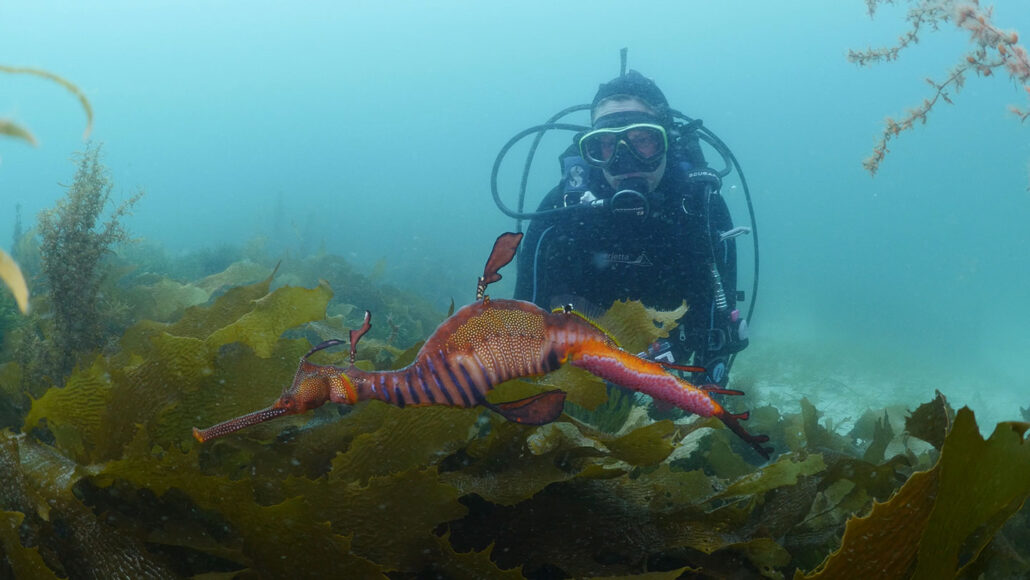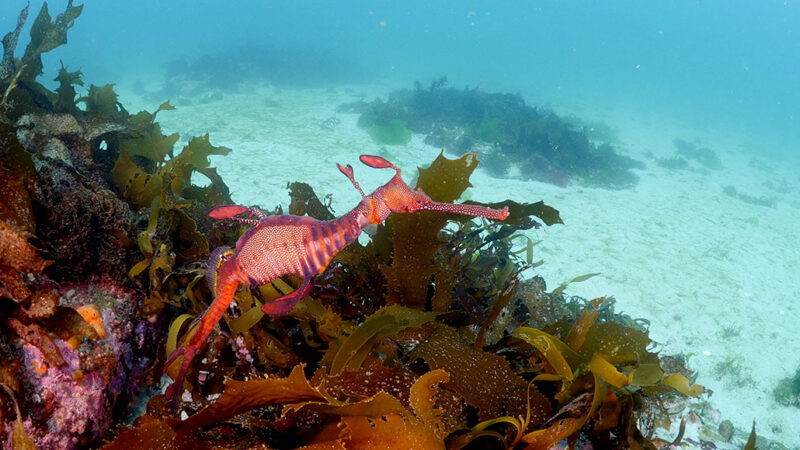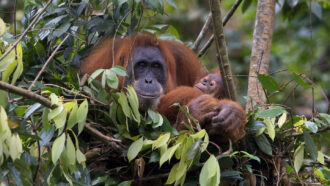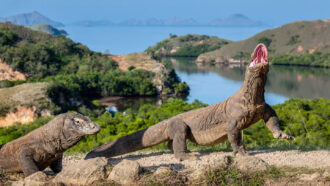This biologist tracks seadragons, with help from the public
Nerida Wilson uses machine learning to better understand the mysterious Australian fish

Three species of seadragons call Australia home: weedy, leafy and the recently discovered ruby. Nerida Wilson uses machine learning to study seadragon photos submitted by citizen scientists, keeping tabs on individual fish by analyzing their unique markings.
John Smith
Along the southern coasts of Australia, flashy fish called seadragons sport leaflike lobes that help them blend into kelp and seagrass. Seadragons “are like the marine version of a koala or kangaroo,” says Nerida Wilson. “They’re just that iconic.”
Wilson is a biodiversity scientist at the Commonwealth Scientific and Industrial Research Organization in Canberra, the capital of Australia. She’s helping create a library of DNA sequences of Australia’s wildlife. In her spare time, Wilson runs SeadragonSearch.
SeadragonSearch uses machine learning tools to identify seadragons in photos taken by citizen scientists. The program analyzes each seadragon’s unique markings to match it with previous photos of the same animal. This helps scientists track individual seadragons over time and learn more about their mysterious lives. That includes how seadragon numbers may be affected by ocean changes.
Though seadragons have been known for a long while, there’s still much to learn about them, says Wilson. Take the ruby seadragon. Wilson helped describe this bright red fish in 2015. One of only three seadragon species, it was the first found in 150 years. In this interview, Wilson shares her experiences and advice with Science News Explores. (This interview has been edited for content and readability.)
How did the SeadragonSearch project come about?
I started diving with seadragons around the areas where I learned to dive in high school. I read research to see whether anyone looked at seadragon genetics before. Could this reveal anything about their populations or where they are traveling? There wasn’t any work in that space. I thought that was outrageous. These are such iconic Australian animals. They’re the state emblem in two Australian states. Fish people weren’t doing it, so I thought I’d better try and find out.
We faced a practical problem in the field, though. While underwater, we’d have to photograph the seadragon. Then, we’d hold it and take our sample. We would just take a little snippet from the leafy appendages. It’s like taking a little toe clipping. After collecting the sample, we’d let the dragon go. We needed to make sure that we didn’t resample the same individual seadragon. That would ruin the statistics.
So we thought maybe the spot patterns on the face were unique. If we couldn’t identify them underwater, this would let us do so afterward. Once we realized that worked, I just tucked it away thinking we could do a lot with that. It served a purpose at the time, but I saw its potential.
It took a long time to find the appropriate funder for SeadragonSearch. But we were able to build the platform and start rolling it out. Seeing all of the data come in was very exciting.

Educators and Parents, Sign Up for The Cheat Sheet
Weekly updates to help you use Science News Explores in the learning environment
Thank you for signing up!
There was a problem signing you up.
What would you say was one of your biggest successes with the project?
I was just thrilled that people wanted to participate. I had these grand plans, and I could see how it could work. People love taking pictures of dragons, and we need pictures to do this research. But you don’t know whether people were going to bother with it. The biggest success was recognizing that other people had the same passion that I did for these creatures.
What piece of advice would you give those interested in this kind of work?
I knew from age four or five that I wanted to work with animals and be outdoors. I couldn’t have explained it properly then, but I knew I was going to make that happen. And I just kept going and refining my goals. Of course, everyone has times of doubt. You’re not sure if you’re just being completely unreasonable, and you should just be an accountant and do something sensible. If someone really wants to do this, I say just do it. It is important to be motivated by what you do. There’s great joy and rewards in doing things that you care about.
What is a particularly memorable experience you had while working on this project?
It was really nice to see Speedy the seadragon in Tasmania [off the coast of southern Australia]. He was the oldest seadragon known. [Speedy lived at least 16 years.] That was special. But sadly, he was only seen about two more times after that. Then he was never seen again.

The guy who often dived with Speedy will send me a hard drive of all these videos. I’ll pull down stills from those videos and submit them to our database. I was catching up with him one time in Tasmania. He started talking about this particular dragon that he called “Cutty.” It caught my attention because I had given that nickname to one of the seadragons in the same area. I started wondering if we were talking about the same dragon.
Most seadragons have a stalk on the head and one on the back of the neck. Cutty, though, is a weird dragon because he has a third one. Because it was like a three-masted dragon, it reminded us both of the Cutty Sark, a famous clipper ship. It turned out that we’d both nicknamed it “Cutty Sark.” We had this cool moment where we realized we’d called it the same weird name.







